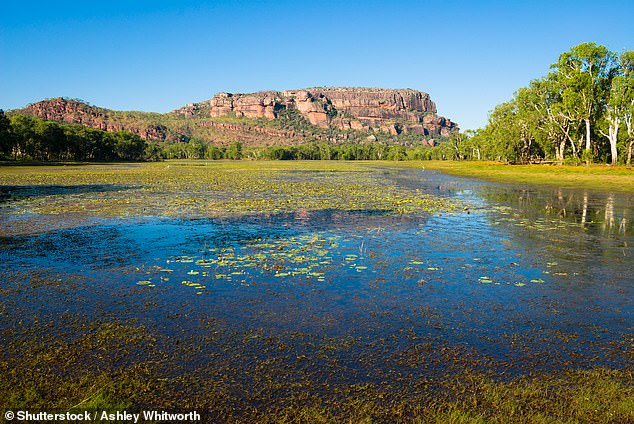Kakadu National Park: Personal items found during search for Jessica Stephens near Nourlangie Rock
- Woman missing in Kakadu National Park
- Not seen since October 19th
- READ MORE: KPMG partner disappears
- Do you know more? Email tips@dailymail.com
The belongings of a woman who disappeared in Kakadu National Park have been found as her family desperately waits for answers after last hearing from her more than a week ago.
Jessica Louise Stephens, 35, last spoke to her family on October 19 and remains missing in the Northern Territory National Park near Nourlangie Rock, where she had been camping.
Ms Stephens’ car was found, while several personal items were also discovered during the search, police said.
Temperatures are expected to rise above 40 degrees this weekend, with search crews very concerned about the missing camper.
“The personal items were found quite a distance from the track,” NT Police Senior Sergeant Steven Langdon said.
“But at this stage we haven’t found anything else.”
Jessica Louise Stephens, 35, last spoke to her family on October 19 and remains missing from Kakadu National Park near Nourlangie Rock where she had been camping

Ms Stephens is said to have been camping near Nourlangie Rock
Over five days, a total of 30 rangers, 14 police officers, two helicopters and drones searched an area of 140 square kilometers in the hope of locating Ms Stephens.
“It’s a race against time,” said Senator Sergeant Langdon.
“The terrain is incredibly difficult, incredibly slow to search and it takes a while to search through the crevices and rocks.”
Ms Stephens’ mother revealed her daughter had recently been discharged from a mental health unit at Darwin Royal Hospital.
Kakadu is one of Australia’s largest national parks, covering almost 20,000 square kilometers of land.
Police are appealing for anyone with information about Ms Stephens’ whereabouts to contact them immediately.
More than 10,000 crocodiles live in Kakadu, making up about 10 percent of the species’ population in the Northern Territory.
